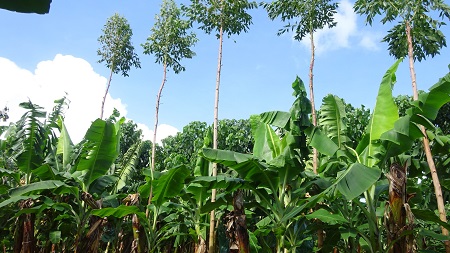
Register with Plumtri!
Register on plumtri as an Individual or as an Organisation to gain access to all of its useful features and remain updated on the latest R&I news, events and funding opportunities.
-
 Welcome to plumtriA platform for Research & Innovation
Welcome to plumtriA platform for Research & Innovation -
 Register today to start receiving our monthly newsletter
Register today to start receiving our monthly newsletter -
 Looking for Funding?Check out the current open calls
Looking for Funding?Check out the current open calls -
 Looking to partner up?Search our list of registered profiles
Looking to partner up?Search our list of registered profiles -
 You have questions on a particular funding programme?
You have questions on a particular funding programme?
What is Syntropic Farming, and How can Farmers Benefit?

What is Syntropy? (and what does it have to do with agriculture?)
In short, syntropy is the complementary opposite of entropy. While entropy governs thermodynamic transformations that release energy at the expense of complexity, syntropy governs life, which accumulates and organizes energy. Syntropic Agriculture relies on cumulative processes of life (syntropic tendency) to restore the fertility of agroecosystems.
What is Syntropic Farming?
Syntropic Farming is a set of principles and practices created by the Swiss geneticist and farmer Ernst Götsch, that help farmers learn how to read the natural strategies of regeneration of each given place and translate them into farming interventions. Syntropic Agriculture is a practice that claims to respect and mimic nature – just as many other practices claim to. The difference, though, is that for Syntropic Agriculture practitioners it is quite clear which natural aspect is to be respected: life’s tendency to accumulate and organize energy, which is expressed in the form of greater diversity and complexity, just like a natural forest do.
Main conceptual pillars:
- Syntropy;
- Ecological succession;
- Strata Distribution
Highlighted practices:
- constant soil cover both by organic matter and high-density planting;
- large biomass production and intensive management by pruning or mowing;
- systematic spatial distribution of plants and synchronization of their growth over time.
Main achievements pursued:
- Independence of irrigation and external inputs, whether synthetic or organic.
- Biodiverse and resilient high yield production.
- Restoration of soil fertility and plant health through natural processes.
- Farmer’s autonomy to make decisions that suit their reality, free from the constraints of technological packages or pre-defined design models.
How to organize plants in a syntropic system
Every functional natural ecosystem is composed of diversified plants that grow together. Within any group of plants, there are species with different life cycles and different light demands or shade resistance. Despite specific features, they not only grow together but also perform a mutual collaborative dynamic while doing so. Fast-growing species protect and nourish slower-growing ones in a way that each group of plants creates conditions for the emergence of the next one. This system reflects the natural process of forest regeneration. Syntropic Agriculture translates these characteristics – in its form, function, and dynamics – into farming practices that organize plant distribution in space, both horizontally and vertically and also in time, according to life cycles. This is done in a way that optimizes photosynthesis and biomass production, ultimately increasing the overall fertility of the field.
Click on the below link to read full article.
